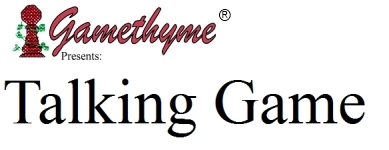When Asmodee sent me a copy in October, I read through the rulebook in more detail. It reminded me a bit of the old On the Edge
But Gosu is very much its own thing. For starters, it's non-collectible. There are 100 cards in the set, no more, no less. And it's not a deck-building game. At all. Which is good, because I'm tired of deck-building games. Dominion
There's an expansion coming for Gosu. It's true. But I sincerely doubt it'll kill the game like all of the Dominion expansions have killed Dominion for me. I believe this because Gosu is a shared-deck game. If each player assembled or brought their own deck, this might be cause for concern. Even when the expansion hits play, you will still only use 100 cards per game (according to early reports).
The cards in Gosu are divided two ways - there are five tribes, and each tribe has three ranks (Bakuto, Hero, and Ozeki), so each card represents a Goblin of a specific tribe and rank. Each tribe consists of 20 Goblin cards - there are five unique goblins at each rank, and the rank one goblins are duplicated once each.
On your turn, you may do one of three things:
- Add a Goblin to your Army
- Spend one or two Activation Tokens to draw cards
- Spend an Activation Token to ... um ... activate a goblin's activated ability.
Adding Goblins to your Army is done in one of two ways - you can either play the goblin directly to your army from your hand or you can mutate a goblin that is already in play. If you already have that goblin's tribe in your army, then playing it is free. Otherwise, you need to discard two cards as a recruitment cost. Mutations all cost discards. Some of them are more expensive than others. And there are placement restrictions - you need to build your army from the bottom, and can't bring in a level three goblin if you don't have a level one and a level two of that tribe in play already. You also can't have more than fifteen goblins in play, in a 3x5 configuration. So if you have five of the level one goblins, then the only way to change your lineup at level one is to mutate someone.
Each goblin has a special ability. Some of them trigger automatically when entering play; some goblins trigger when they mutate; some of them trigger when they're destroyed; some goblins have continuing effects; some goblins trigger after a Great Battle; and some require an activation token to trigger. Goblins can cause you to draw cards, discard cards, flip opponent's goblins face down, destroy goblins outright, or win the game.
If you can't (or don't want to) play, you can pass. If you pass, be prepared to sit for a while as you don't get another turn until all the other players have passed. But you can't leave the table - other players can still mess with your army and hand. And they will.
Once all players have passed, you calculate the strength of your army. The player with the strongest army wins the Great Battle and earns a victory point. After each battle, you turn your face-down cards back face-up and recover your activation tokens.
And then play continues - you keep the same army from battle to battle. You need to keep this in mind, even early in the game. Otherwise, you may build an army with a solid set of initial abilities that wind up just taking up space on the board in later rounds. Yes, you can mutate your army into other goblins, but that costs you cards from your hand - and you probably don't have that many cards to spare.
And there is a catch-up mechanism, too. Some cards are more powerful if someone other than you is in the lead. It generally means that a player who is behind draws more cards or the player in the lead discards more cards. I was skeptical of this when I saw it in the rulebook, but, having played it, it works beautifully to keep the first player on the board from steamrolling the other players. I'll admit that I've had trouble coming from behind when playing two-player, but it works beautifully with three or four players.
The first player to three victory points wins the game - but there are other ways to win, too, depending on which of the Ozeki are in play.
For me, this game really shines with three or four players. This, by the way, makes me different from nearly everyone else on Boardgamegeek. With four, the game suggests making it a partnership game rather than a free-for-all. But I do so love the free-for-all.
And have I mentioned the art? Take a look at the game's gallery on Boardgamegeek. None of those images really do the game justice, either. The art is really good. It's entertaining and doesn't get in the way of the game. Each of the clans has their own look-and-feel and it's not hard to tell from across the table which faction(s) you have in play.
It all combines to form the most entertaining standalone card game I've played in several years.

No comments:
Post a Comment